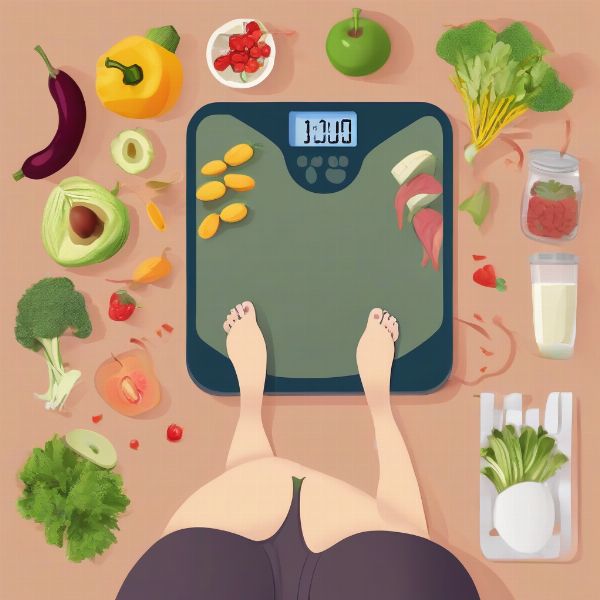Imagine this: You have a big event coming up in two weeks – a wedding, a reunion, a beach vacation – and you’d love to feel confident and amazing in that special outfit. You’ve probably stumbled upon the idea of losing 10 pounds in two weeks. While it’s tempting to seek quick fixes, it’s essential to prioritize your health and aim for sustainable weight loss.
This article delves into realistic strategies and provides a comprehensive guide on how to approach your weight loss journey safely and effectively.
Understanding Healthy Weight Loss
Before embarking on any weight loss plan, it’s crucial to set realistic expectations. The Centers for Disease Control and Prevention (CDC) recommends aiming for 1-2 pounds of weight loss per week. This gradual approach is not only healthier but also more sustainable in the long run.
 Weight Loss Journey
Weight Loss Journey
Effective Strategies to Kickstart Your Journey
While losing 10 pounds in two weeks might be overly ambitious for long-term results, you can still make significant progress by incorporating these strategies:
1. Focus on a Balanced Diet
Calorie Control: Creating a calorie deficit is crucial for weight loss. This means consuming fewer calories than you burn. However, extreme calorie restriction is not recommended, as it can lead to nutrient deficiencies and slow down your metabolism.
Prioritize Whole Foods: Opt for nutrient-rich whole foods such as fruits, vegetables, lean proteins, and whole grains. These foods provide essential vitamins, minerals, and fiber, keeping you satiated and energized.
Limit Processed Foods: Processed foods are often high in calories, unhealthy fats, sugar, and sodium, contributing to weight gain and various health issues. Minimize your intake of sugary drinks, fast food, and packaged snacks.
Hydrate Smart: Drinking plenty of water throughout the day is essential for overall health and can aid in weight management. Water helps you feel full, reducing the likelihood of overeating.
2. Incorporate Regular Exercise
Cardiovascular Exercise: Engage in at least 30 minutes of moderate-intensity cardio most days of the week. This could include brisk walking, jogging, cycling, swimming, or dancing.
Strength Training: Include strength training exercises at least twice a week to build muscle mass. Muscle burns more calories at rest, boosting your metabolism and aiding in weight loss.
Stay Active: Find ways to incorporate more movement into your daily routine. Take the stairs instead of the elevator, walk or bike to work, or do some light stretching during breaks.
3. Prioritize Sleep and Stress Management
Adequate Sleep: Lack of sleep can disrupt hormones that regulate hunger and metabolism, leading to increased appetite and potential weight gain. Aim for 7-9 hours of quality sleep each night.
Stress Reduction: Stress can trigger the release of cortisol, a hormone that promotes fat storage. Engage in stress-reducing activities such as yoga, meditation, or spending time in nature.
Realistic Expectations and Maintaining Motivation
While you may not lose 10 pounds in two weeks, following these strategies can help you:
- Jumpstart your weight loss journey.
- Notice improvements in your energy levels and overall well-being.
- Develop healthy habits for sustainable weight management.
Remember: Consistency is key. Focus on making small, sustainable changes over time rather than resorting to drastic measures. Celebrate your progress and don’t get discouraged by setbacks. If you find yourself struggling, consider seeking support from a healthcare professional or a registered dietitian.